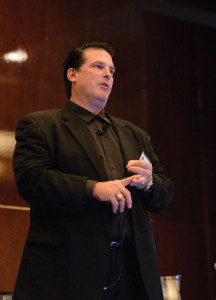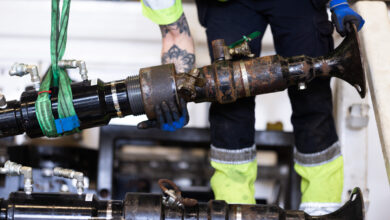API Spec Q2 aims to standardize risk mitigation, improve service reliability
By Joanne Liou, associate editor

An industrywide collaboration is pushing to standardize expectations for drilling services with a risk management-based system. Although development of API Spec Q2 began before Macondo, the incident hastened its publication in December 2011 as an effort to stay ahead of regulators. “It was better that industry came together, collaboratively work together and identify the expectations for drilling,” Stacey Hagen, services & systems team lead at ExxonMobil Development Co, said. Mr Hagen also serves as chairman of API Subcommittee 18 on quality.
“Q2 is not a manual. It’s not something you check off. We’re really pushing this to be something that is all about risk mitigation, validation through performance,” he emphasized at the 2014 IADC HSE&T conference in Houston last week. “It will improve product reliability. It will minimize risk through identification, planning and controls, and it will improve efficiencies and our communications.”
ISO 9001 and API Spec Q1 are process-based systems that require six and 12 documented procedures, respectively. Q2 builds upon those and requires 24 procedures. “One of the main causes of downtime is lack of procedures and not following the procedures. API Spec Q2 requires that your organization has 24 procedures that you manage the service by,” said Bo Creek, QA/QC manager at Orion Drilling Co. Q1 and Q2 share similarities in quality policies, upper management reviews, corrective and preventive actions, and measurement, analysis and improvement. However, Q2 goes beyond Q1 by setting standards in competency of personnel, risk management, contingency planning, and preventive maintenance and tests.
Orion Drilling, along with Baker Hughes, Schlumberger, Weatherford and Halliburton, completed beta-test site assessments in 2012 and 2013. “(Orion) wants to be able to set the bar. When these auditors are looking at drilling contractors and when this becomes a requirement for a drilling contractor, then we’ll have a leg up,” Mr Creek said. “It’s going to improve our processes. It’s going to improve communication with our customer, and it’s going to standardize the requirements across the industry.”

Mr Hagen reiterated the call upon drilling contractors to join this collaborative effort. “You have an opportunity to drive the bus or be driven by the bus,” Mr Hagen stated. “It’s your choice. We’re reaching out to you to get your buy-in into it and have you help us identify what the minimum requirements are to meet this standard.”
One of the challenges to operations is the variation of expectations among customers. “As users, we drive the variation. If you look at the customers you have – the BPs, the Shells the ExxonMobils, the Chevrons – how different are their requirements for drilling service contractors? It’s a huge variation,” Mr Hagen said. Further, operational complexity is increasing along with spread rates, which puts more pressure on the need for reliable tools. Industry must also take into consideration the root causes of NPT, such as personnel competency, use of equipment history logs and contingency planning.
API has begun certification for Q2 and believes it could become a required expectation by 2015, Mr Hagen said. “It’s going to take time to get this thing flowing. In the meantime, we need to all be working together toward this.”





How do I obtain a hard copy of the article and/or magazine with the article on API Spec Q2 aims to standardize risk mitigation, improve service reliability